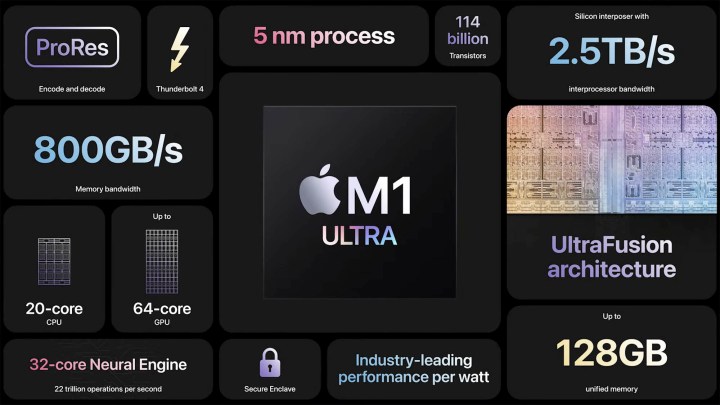Apple has recently revealed new information about the Mac Studio and the Studio Display, detailing the tech that was used in the making of these two devices.
Moving on from Intel to the M1 Ultra chip was a long journey that led us to where we are now: A mini PC that demoed 18 streams of 8K footage at once and a display with six powerful speakers that stands motionless on the desk. But in order to get there, Apple left behind hundreds of less-than-perfect attempts.

Keeping it cool
The Mac Studio, a small, square-shaped mini PC, is Apple’s latest and greatest. It’s not cheap, but for $4,000, you can get a computer that comes with two M1 Max chips fused together to create the staggeringly powerful M1 Ultra. A recent test performed by a YouTuber revealed that the Mac Studio drastically cuts down the time spent on tasks such as video rendering. A $20,000 Mac Pro needed over 10 minutes to render a video that took the $4,000 Mac Studio just over three-and-a-half minutes.
In an interview with FCP, several Apple employees spoke about the way the Mac Studio was made. One major concern was cooling — it’s a small PC, but it packs a lot of punch, so the thermals were always bound to be a concern. Shelly Goldberg, senior director of Mac and iPad product design, admitted that ensuring the Mac Studio stays cool and stable was a challenge. Apple engineers went through hundreds of options before settling on the most optimal airflow pattern for the Mac Studio. At the bottom, the PC has over 2,000 holes that bring air in.
In order to mill those holes into the 80% recycled-aluminum chassis of the Mac Studio, Apple first had to design a special machine that could spin up to 10 times faster than the milling tool Apple usually used. Further adjustments were made to find the perfect balance of acoustics and thermals, ensuring that the Mac Studio doesn’t make too much noise while still performing well under pressure. As a result, the Mac Studio delivers the performance of desktops that are sometimes up to 17 times bigger, and in many cases, it may outperform them.

Listening to customers
The Mac Studio is a testament to Apple listening to customer feedback — and its plentiful ports should be proof of that. Even the 2019 Mac Pro does not have a built-in SD card slot, but the Mac Studio brings that back alongside multiple other important connectors. Many people disliked the way Apple products required separate hardware in order to expand their connectivity options, so this is a step in the right direction that also showed up in the Mac Studio Display that arrived equipped with a Thunderbolt 4 port.
The six-speaker system in the Studio Display is certainly another feature that Apple seems to be proud of. Kate Bergeron, the vice president of Apple’s hardware engineering department, talked to GQ about the way this tech was brought to life. Adding six powerful speakers to something that weighs as little as a monitor could potentially result in disaster. To remedy that, Apple used a technology called “force canceling reverse” and chose to offset the speakers, canceling out the vibration caused by the loud sound escaping the display. There’s a lot of new ground that Apple has covered with the monitor, and it could be just the first step — rumor has it that there might be a Studio Display Pro in the works down the line.
Throughout both interviews, one sentiment is echoed multiple times — a feeling of excitement at the ongoing changes. This means good news for all Apple enthusiasts because, with future innovations such as the M2 chip on the horizon, there’s a lot to look forward to. And if Apple’s own employees are feeling the hype, then that’s the perfect first step.
Editors' Recommendations
- The 6 key things Apple must fix in the next version of macOS
- Apple already has its next big chip, but you may never see it
- Why Apple’s M3 Ultra could be an absolute monster
- Why you should buy a MacBook Pro instead of a MacBook Air
- 4 monitors you should buy instead of the Apple Studio Display



